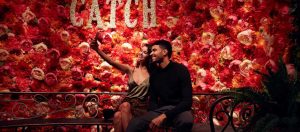Hospitality Design Trends 2020 – What’s Staying in Style
Hospitality design trends are constantly changing, but there are always some favorites that stick around season after season.
2020 is no exception – the new decade has inspired some exciting new hospitality design trends for hotels, restaurants, and bars. This article on 2020 décor and design trends will bring you up to speed on what’s staying in season. Once you’re updated on what should stay, check out our follow up article on new trends in hospitality design for the new decade!
Going Green
“Green” is the key word this year. Recycled, reused, and responsibly sourced materials are quickly becoming the norm, along with designs that harmonize with nature. Hotel Tech Report named “LEED Certification” as one of 100+ Hotel Trends to Watch in 2020:
Short for Leadership in Energy and Environmental Design, this global certification (LEED) measures the eco-friendliness of a building.
TreeScapes & PlantWorks’ preserved palm fronds and palm tree bark encased tree trunks are made with recycled plant material. They are so resource-efficient that they qualify for up to 90% of their purchase price in LEED credits!
Lodging Magazine‘s article, Eight Ways to Foster Wellness and Interconnectedness Through Hotel Design, mentioned how going green is also inspiring color choices:
“The urge to reconnect with nature in today’s society is also affecting color selection. Nature-themed colors are in.”
Biophilic Design
The other side of the green trend is something that’s been going on for a while and may continue through the entire decade: biophilic design. It’s often described as bringing the outside inside, or In and Out design. Research has found that humans are happier, healthier, and more productive when nature is brought indoors.
Noted interior designer Cristina Villalon discussed this in her Smart Meetings article Hotel Trends from a Celebrity Designer:
“Biophilic design connects a visitor with nature. As many people spend most of their time indoors, they crave moments of interaction with nature. Biophilic design provides a way to meet those needs by creating a habitat in our built environments.”
It’s not just about aesthetic appeal and stress relief, though. Biophilic design makes financial sense! Terrapin Bright Green released The Economics of Biophilia, a white paper that detailed how the presence of plants and trees can increase profits:
“When shown images of greener retail settings, respondents indicated that an acceptable price to pay was 20% higher for an item in convenient shopping (e.g., a sandwich for lunch), 25% higher for general shopping (e.g., a new jacket or watch), and 15% more for specialty shopping (e.g., a gift for a family member) (55. Wolf, 2005).
The addition of plant life into the realm of retail shopping appears to act as a stimulus that boosts the image perception and economic viability of stores.”
If you’re interested in learning more about these hospitality design trends, check out our free Basics of Biophilic Design white paper.
Indoor Trees
This trend started in the twenty-teens, and we’re proud that we played a role in increasing the popularity of indoor trees as hospitality décor. Our replica Mediterranean Olive Trees at the RH (formerly known as Restoration Hardware) 3 Arts Club Café helped to spearhead this trend.
We’ve also created and installed indoor Cherry Blossom, Birch, Acacia, Palm, and Oak trees at restaurants around the world!
The Eater included indoor trees in their article The Stunning Restaurant Design Trends Most Likely to Take Over 2020:
“In 2020, I’m expecting to see folks push the envelope with their hanging gardens, indoor trees, and wall-to-wall leaves and show us something we haven’t seen yet.”
In another article, Forget Your Fiddle-Leaf Figs: 2020 Restaurant Decor Is All About the Booth Tree, suggests that “trees growing out of the backs of booths are among the lushest restaurant design trends”.
Social Media Appeal
Instagram walls and photo-friendly spaces will continue to grow in popularity this decade. Our customized green walls, flower walls, and vertical gardens make ideal selfie spots for your guests! Parterre Flooring mentions this in their article, 10 Restaurant Design Trends to Watch in 2020:
“Social media also allows users to experience a restaurant before they even step inside the door. They can look at pictures of the restaurant’s design aesthetic, and of the food (either from the restaurant’s own social media account or from others who have posted content and tagged the location).
Tips from the article How Technology Can Help Restaurants to Serve Millennial & Gen Z Better include offering free wifi, online booking, and even using AV/VR to entice diners.
ProGroup Contracting had similar advice in their article 2020 Hotel Design Trends to Keep at The Cutting Edge and Remain Competitive:
“Being that Instagram is one of the most effective marketing tools for building brand awareness, hotels need to create spaces that are Instagram-worthy. This means using quirky and playful designs to create unique spaces to become Instagrammable.”
Giving your space social media appeal is easier than it sounds! Our free infographic and white paper, How to Make the Next Instagrammable Space, offers inspiration, ideas for hospitality design trends, real world success stories, and an easy to implement tips.
Faux Plants
Designing with plants fits right in with the trends of going green and using biophilic design. The twist for 2020, though, is that artificial plants are taking center stage! Part of this was spurred by another recent and unfortunate trend: dead plants on display.
The Eater summed up the problem in their 2018 article, We Need to Talk About Dead Houseplants in Restaurants:
Dining room greenery is perfect for Instagram, but only if the plants are alive.
Artificial plants are big in home design, and that has carried over to the hospitality industry. Forbes offered insight in the article Americans Will Shop High-Low For Home Furnishings, And 5 Other Decorating Trends In 2020:
“Artificial plants always look perfect and have that feel of foliage.”
Wondering what’s brand new for 2020? Be sure to read our follow up article, New Hospitality Design Trends 2020!








